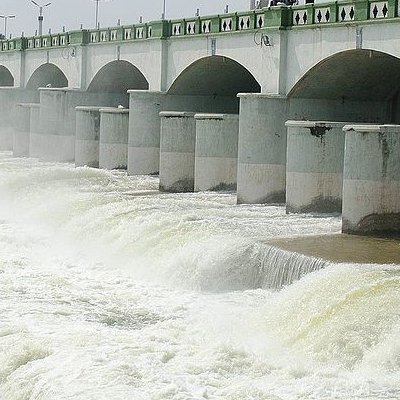Kallanai Dam - Tamilnadu

Tucked away in the center of Tamil Nadu, the Kallanai Dam is a reminder of the old Indian civilization's inventiveness and architectural brilliance. Grand Anicut is a must-see location in Tamil Nadu as it is one of the oldest dams in the world, was constructed more than 2,000 years ago, and is still in use today. In Tamil Nadu, India, the historic Kallanai Dam, also called Grant Anaicut, is situated in the center of the districts of Thanjavur and Trichy. This dam, which was constructed by Karikalan Cholan of the Chola Dynasty about 1,900 years ago, is the oldest still-existing water-diversion construction in India and the fourth-oldest in the world. The dam is situated on the Kaveri River, precisely 14 kilometers from Thanjavur and 45 kilometers from Tiruchirappalli. Its main objective was to use canals to redirect waterways for agriculture across the rich delta region and to Kollidam/Coleroon, the northern delta branch. The dam is 20 m (66 ft) broad, 5.4 m (18 ft) high, and 329 m (1,079 ft) long.
It is an architectural marvel in superb shape and has acted as a template for engineers in the past, such as Sir Arthur Cotton, whose dam across the Kollidam was built in the 19th century. Twenty miles (32 km) west of Kallanai, the Kaveri River divides in two. Before coming together at Kallanai, the two rivers formed the island of Srirangam. The second canal, which continues to be known as Kaveri and flows into the Bay of Bengal at Poompuhar, is known as the Kollidam (Coleroon) in the north. The seaports of Nagapattinam and Karaikal are located on the seaward face of the delta. Tamil Nadu's delta farmers have been demanding that Karikala Cholan be given recognition for constructing this dam. In order to encourage irrigation for the delta region, the British conducted studies on the Kaveri River in the 19th century. Major Sim subsequently advocated installing under sluices across the river with outlets leading to the Kollidam River to prevent silt accumulation, while Captain Caldwell had originally considered boosting the dam's height to increase its capacity. It is believed that the Lower Anaicut, which Sir Arthur Cotton constructed in the 19th century across Coleroon, is a copy of Kallanai. In the second century B.C., the Chola ruler Karikalan built the Kallanai Dam. Its principal aim was to redirect the Cauvery River's waters for agricultural use. The granite stones used in the construction of the dam allowed it to endure the intense monsoon rains. The Kallanai Dam's distinctive characteristic is its curved design, which permits water to pass over it without weakening the base. The 'anicut,' as this device is called, is regarded as a masterpiece of ancient engineering. The Kallanai Dam measures about 20 meters in height and 325 meters in length. It controls the amount of water that enters the irrigation canals using 104 sluice gates. There are sixty-ten-meter-tall granite pillars supporting the dam.
Kallanai Dam is a popular tourist attraction these days, allowing visitors to relax and unwind while sitting beside the crystal river water. Boating and fishing are two more popular activities at Kallanai Dam. Tamil culture has a unique place for the Kallanai Dam. It is regarded as a sign of the agricultural wealth of the area and is described in ancient Tamil literature. Many artistic creations, such as paintings and sculptures, have featured the dam. An outstanding illustration of the inventiveness of ancient India is the Kallanai Dam. Its creative design and enduring usefulness are proof of our predecessors' ability and vision. For future generations, this historic wonder will continue to provide recreational activities, flood control, and irrigation.
How to reach Grand Anaicut ?
By Air –Trichy airport is the nearest to reach Grand Anaicut covering 26 Km
By Train –Trichy junction is the nearest to reach Grand Anaicut covering 22 Km
By Road –Driving from Trichy is the easiest way to reach Grand Anaicut via NH45 covering 20 Km